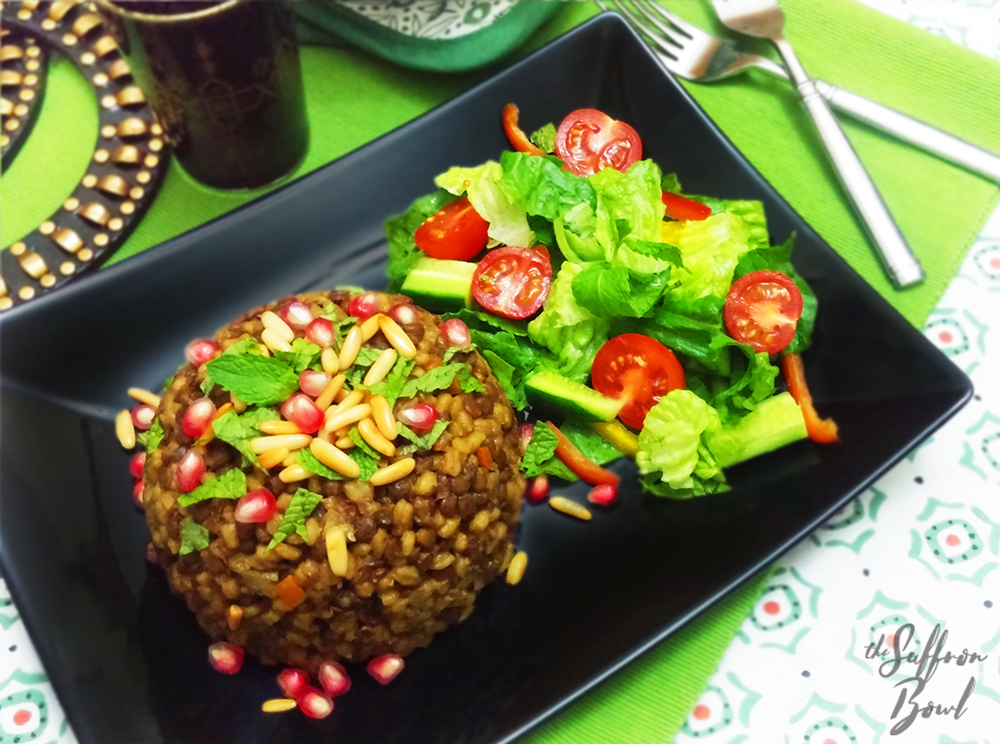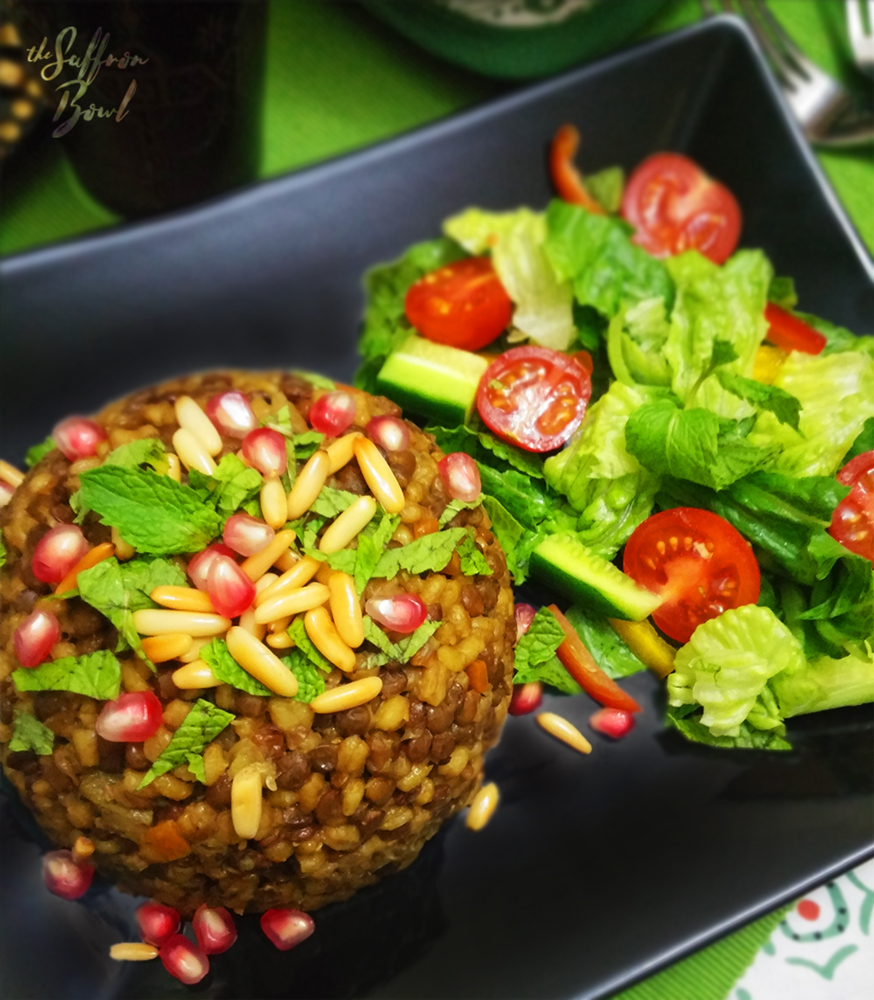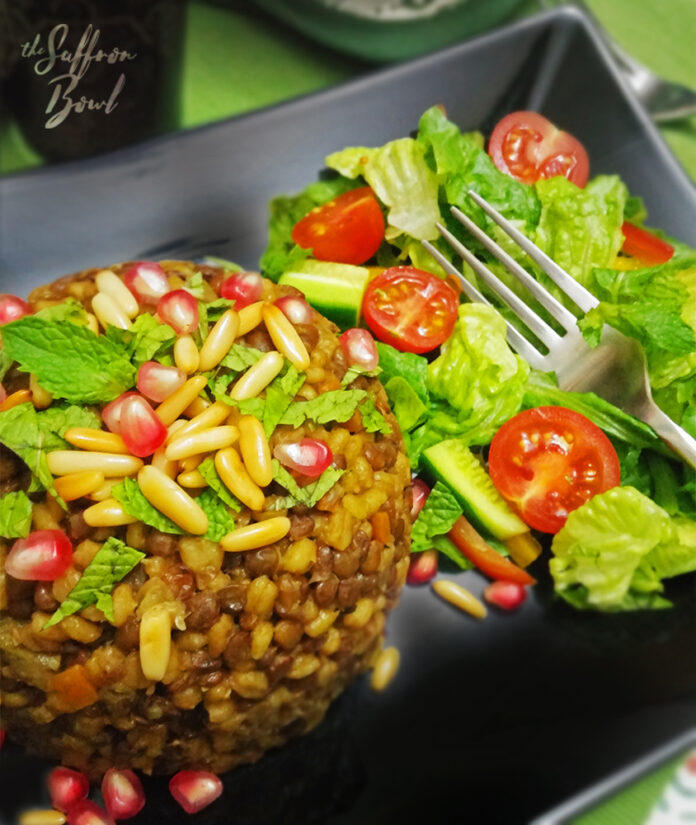I love a good biryani, don’t you?
Ramadan is the time you get the fragrance of Biryani on every floor of my apartment complex, close to the time when Iftar commences. I simply adore the fragrance of the spices and meat that bring together this one-pot-meal called Biryani! Unfortunately, not all of us have the time to prep the multitude of ingredients associated with this popular dish; most working women I know just rush home exhausted from their fasting and probably have just under an hour to put together an Iftar meal for the family.
Mujadara (mujaddara) is a signature Middle Eastern dish of lentils, rice, and caramelized onions. A dish full of flavour and my version is the more traditional one using Bulgur (Burghul) and assorted veggies too. This Bulgur Lentil Pilaf is going to be quite a stunner on your Iftar table, not only will it delight your taste buds, but it’s also pretty easy to prep and cook, thanks to the quick cooking skills of a pressure cooker. The humble pressure cooker is a must have kitchen gadget for anyone who cooks. It cuts down cooking time by less than half for rice or meat-based dishes. So, for those of you who simply don’t have the time to cook up a Biryani, this Pilaf creates a healthy balance for your Iftar meal. You can serve this Pilaf alongside any grilled meats or other veggie main courses and salad. Do give this easy and nutritious recipe a try, and don’t forget to tag #saffronbowl on social media with your creations.
If you wish to read more on the benefits of Bulgur Wheat, follow this link.

Ingredients
2 tbsp olive oil or any cooking oil
4 garlic cloves, finely minced
1 cup thinly sliced onions
1 cinnamon stick
1 bay leaf
1 tsp Himalayan salt
1/4 tsp turmeric powder
3 cups stock or water
1 cup brown lentils
1 cup whole Bulgur
1 carrot, finely chopped
2 baby marrow, cubed
2 tbsp Ghee (optional for non-vegans)
¼ cup chopped fresh mint
1/4 cup roasted pine nuts (optional)
1/4 pomegranate seeds (optional)
1/4 cup fried onions (topping)
Wash the lentils and Bulgur wheat well, discarding any floating elements in the water, let it soak up for a minimum of 15 minutes in water, and then drain it. Heat the oil in a pressure cooker and drop in the bay leaf, cinnamon, garlic, and onions. Brown the onions well (by salting the onions at this point, you can avoid burning). Once the onions are well browned (make sure it’s really dark brown; this will help your pilaf get a rich colour towards the end of the cooking process), add the carrots, baby marrow, turmeric, lentils, and Bulgur wheat. Add the 3 cups of water or stock (add more salt if you are using water). Cover the pressure cooker and cook on high until the whistle blows, lower the heat and let it simmer for 10–15 minutes, after which you can turn it off.
Uncover and fluff up the Pilaf with 2 tbsp Ghee, so it gets a lovely gloss and the grains get well separated. Serve hot, garnished with the fried onions, chopped mint leaves, pine nuts and pomegranate seeds.
Tip- I have used brown lentils here in my version, but you can substitute with chickpeas or green lentils too (dry chickpeas need to be soaked overnight). Other veggies that work well with this are Zucchini, small cubed potato, green peas and cauliflower. Paleo folks can use meat stock, which will enhance the flavour and colour of this Pilaf, just make sure that you check for the saltiness of the dish as a precautionary measure. Optional toppings for this Pilaf are Parsley, Cilantro, Slivered Almonds and roasted Cashews. The last step of my cooking process, the 2 tbsp of Ghee is entirely optional, it does give a really delicious lift to the Pilaf, but feel free to skip this step if you are making this dish as a takeaway lunch or a picnic meal idea.



